close 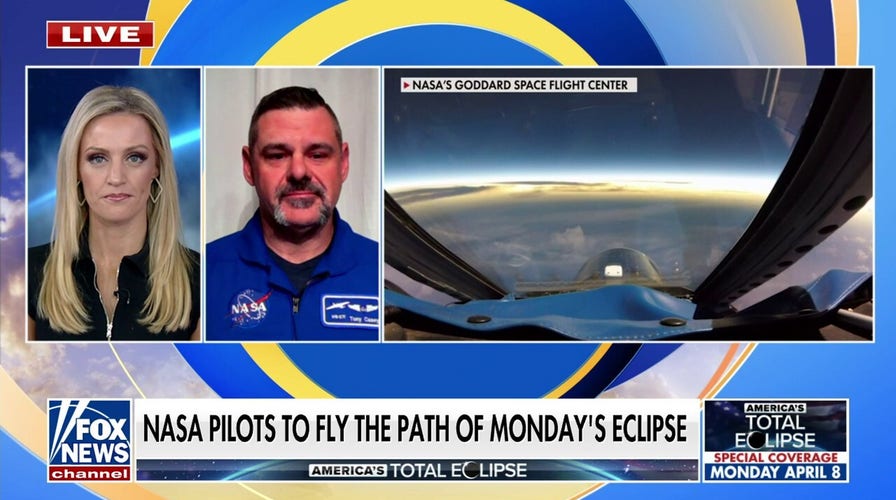
NASA pilots prepare for flying through solar eclipse
One of the four NASA pilots who will be flying through solar eclipse, Tony Casey, discusses the upcoming mission
The increased traffic and spectacle of the total solar eclipse on Monday could imperil motorists, with researchers warning that fatal collisions increased during previous eclipses and law enforcement bracing for the event.
There was a 31% increase in fatal traffic accidents during the 2017 total eclipse – and even in the days before and after the astrological event – according to a letter published in the JAMA Internal Medicine journal this week.
The surge in accidents wasn’t linked to the moments of darkness when the moon obscured the sun – surprisingly, “we see a significant decrease during the single hour that involves the eclipse,” co-author Dr. Donald Redelmeier wrote.
“The problem is the surrounding hours, when people are traveling to their place of observation and especially afterwards,” Redelmeier, the University of Toronto professor of medicine, told Live Science. “We’re especially concerned about the drive home.”
SOLAR ECLIPSE 2024: FOX WEATHER TO OFFER SPECIAL COVERAGE WITH ‘AMERICA’S TOTAL ECLIPSE’
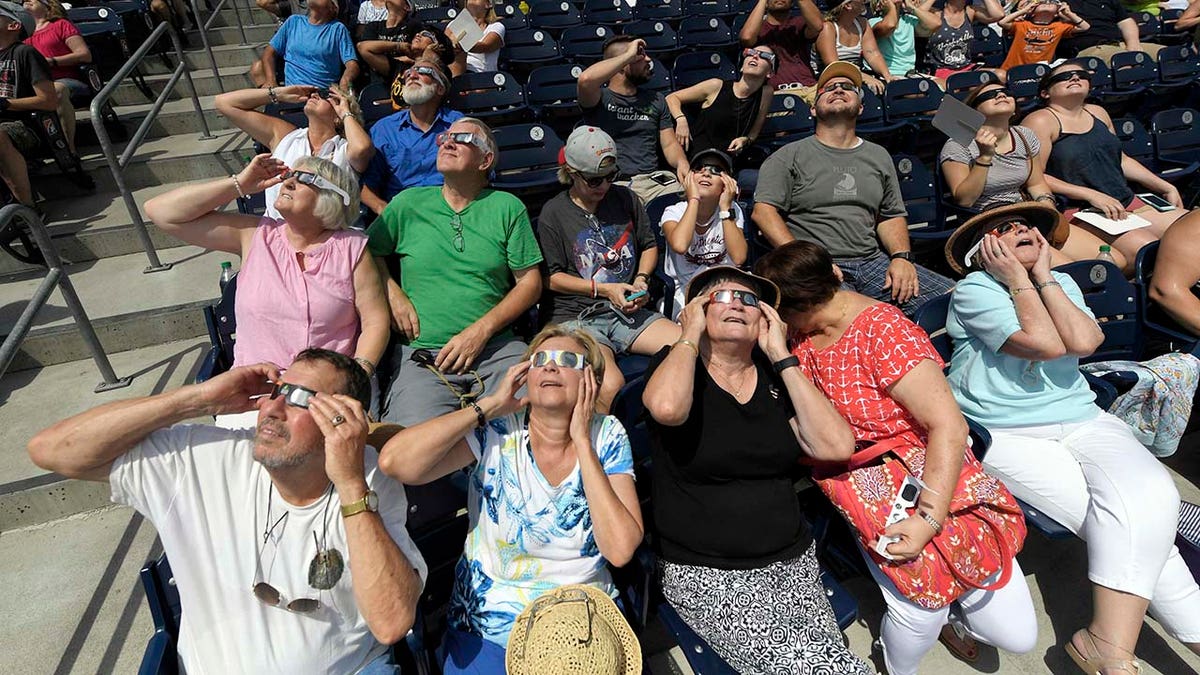
It’s more common to hear about eye-related injuries than car crashes in relation to total eclipses – but researchers say that fatal crashes increased by 31% in the days surrounding the 2017 eclipse as millions traveled into its path of totality. (Shelley Mays/The Tennessean/USA Today Network/Imagn)
Richard Fienberg, project manager of the American Astronomical Society’s Solar Eclipse Task Force, told Time that the event will be “like having 20 or 30 Super Bowls happening all at once” in terms of road traffic.
During the 2017 eclipse, around 20 million people in the U.S. traveled to other cities within the 70-mile path of totality, according to University of Michigan estimates.
The 2017 path was within a three-hour drive of only three major cities – Portland, St. Louis and Kansas City. In comparison, the 2024 event will be within three hours of eight major cities, including Toronto, Houston and Chicago.
The Institute of Transportation Engineers conservatively estimated that 5 million people will travel for the event, and said that if they all left the path of totality as soon as the event was over, the resulting traffic would be the equivalent of 71 sold-out football games ending all at once.
On Monday, viewers will see just 2.5 to 4.5 minutes of totality, with viewers outside the path only able to see a partial eclipse. The path will pass from the Pacific coast of Mexico to Newfoundland in Canada, passing through Texas, Oklahoma, Arkansas, Missouri, Illinois, Kentucky, Indiana, Ohio, Pennsylvania, New York, Vermont, New Hampshire and Maine.
SOLAR ECLIPSE EYE SAFETY: CAN STARING AT THE SUN CAUSE BLINDNESS?
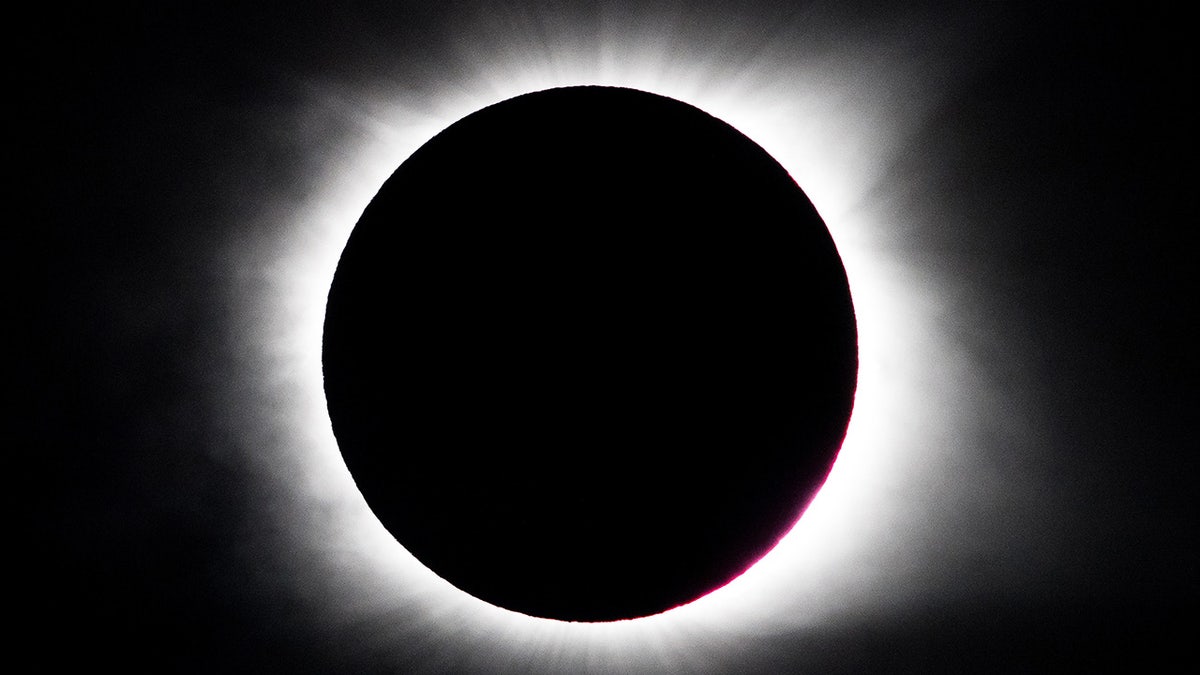
The Institute of Transportation Engineers conservatively estimated that 5 million people would travel for the event, and said that if they all left the path of totality as soon as the event was over, the resulting traffic would be the equivalent of 71 sold-out football games ending all at once. The 2017 eclipse, viewed from Nashville, is pictured. (Andrew Nelles/The Tennessean/USA Today Network/Imagn)
NASA estimated that 31.6 million people already live within the path of totality and 150 million more will be able to see partial totality – millions more will surge into those areas on Monday. In 2017, comparatively, 12 million people lived within the eclipse’s path.
The area of totality was only about 70 miles wide in 2017 – this year’s eclipse will have a 115-mile band, NASA estimates.
“The 2017 total solar eclipse was widely anticipated because the path of totality (locations experiencing a total eclipse) fell within 300 miles of driving distance for a third of all individuals in the U.S. An estimated 20 million people in the U.S. traveled away from home to another city to view the eclipse, resulting in substantial road traffic,” the researchers wrote in the paper. “We hypothesized that the eclipse was associated with increased risks of a fatal car crash.”
Road traffic fatality rates increased from an average of 7.9 per hour to 10.3 per hour on average during the three-day window surrounding the eclipse, researchers found.
“In absolute terms, this averaged to 1 extra crash-involved person every 25 minutes and 1 extra crash fatality every 95 minutes,” the authors wrote.
SOLAR ECLIPSE: NEW YORK PUMPS UP POLICE FORCE FOR BIG CROWDS, WARNS CRIMINALS WILL ‘GET CAUGHT’
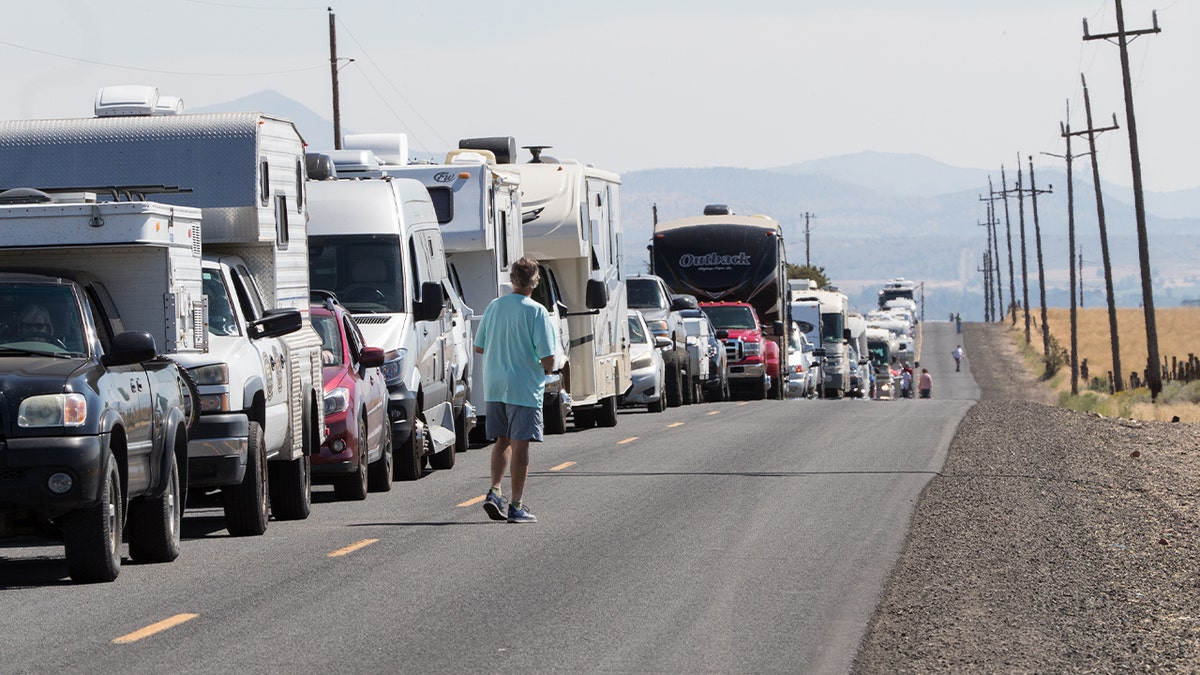
RV traffic sits at a standstill along a two-lane road near Madras, Oregon, Aug. 17, 2017. Traffic jams in some areas of Oregon after the 2017 eclipse took up to 20 hours to clear, according to transportation agencies. (Getty Images)
The hours just after the totality had a 50% higher risk of fatal accidents than average on the road, the study showed.
The total increase is in line with major holidays like Thanksgiving and July 4 weekend, they said.
The study focused on fatal crashes – while it’s likely that less severe accidents also increased, Redelmeier told Live Science that “we just don’t have the data on that.”
Just in western New York, experts are predicting an influx of up to 1 million eclipse chasers, New York State Police Public Information Officer James O’Callahan told Fox News Digital. Just over 2 million people live in the region, according to census data.
Law enforcement and municipal officials have spent the last year planning for the astronomical event, with their focus primarily on traffic safety, he said. An additional 100 to 150 state troopers will be pulled into the region, primarily for traffic control.
A large part of preparing for the event involved analyzing previous eclipse events. That included places like Oregon in August 2017, where masses of traffic took more than 20 hours to clear in some places as tourists traveled to and from their watch spots.
SOLAR ECLIPSE: NEW YORK MURDERER, FELONS SUE FOR ‘RELIGIOUS’ VIEWING AFTER PRISONS ORDER LOCKDOWNS
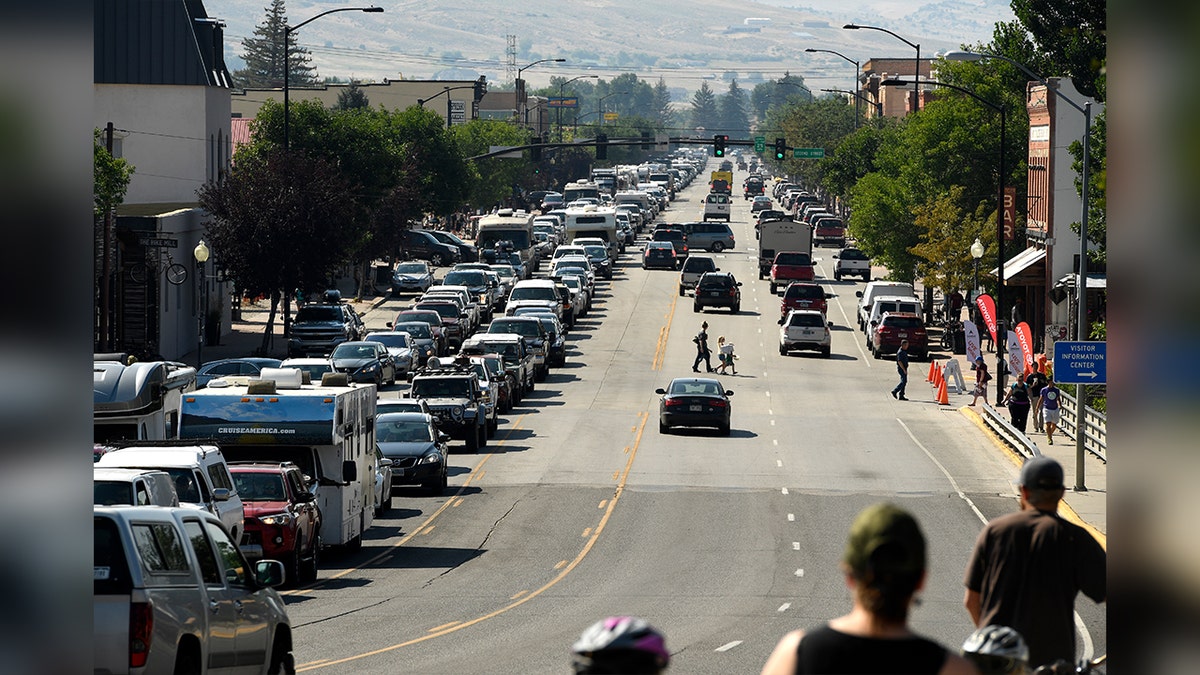
The great American eclipse turned into a headache of a drive as many drivers took to the road at the same time and had to deal with long lines of stopped traffic while trying to get out of town on Aug. 21, 2017, in Lander, Wyoming. (Helen H. Richardson/The Denver Post via Getty Images)
Impacted cellphone service, traffic jams and decreased mobility for first responders in the event of an emergency are all potential dangers. The Niagara region on the Canadian side of Niagara Falls declared a state of emergency for April 8 in light of those concerns.
CLICK HERE TO GET THE FOX NEWS APP
Some cities, like Niagara Falls in New York, are taking steps to keep revelers in town after the event has concluded to space out departing traffic:
“We’re actually advocating for people to not leave immediately once the totality has been completed, [but] to stick around, like when you tailgate at a football game. [This is to] let traffic go; sit around and enjoy the entertainment that will be there so it will be easier to get out,” a mayor’s office spokesperson told Fox News Digital, mentioning that area vendors, musicians and nighttime fireworks would be available.
Christina Coulter is a U.S. and World reporter for Fox News Digital. Email story tips to [email protected].
